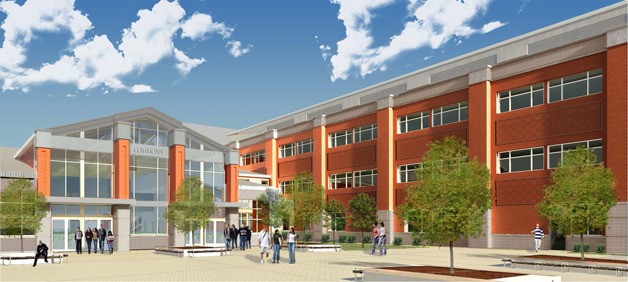The Auburn School Board will place the $110 million Auburn High School modernization and reconstruction bond on the Nov. 6 ballot.
School taxes will stay level if the bond passes in November.
In the Feb. 14 special election, the bond measure came close but couldn’t quite muster the 60-percent supermajority state law requires for bonds, finishing with 55.2 yes votes, 4.8 percentage points under the mark.
The measure gathered 14 percent more yes votes than it got in 2009 when the district first put the question to voters.
District officials are aware that some supporters will be wary of putting the measure on the fall general election ballot, where it would compete not only with the presidential election but with various referenda and initiatives. But, as Superintendent Kip Herren noted, the district has passed capital improvements levies on general election ballots before.
School officials say the 61-year-old high school is in disrepair and is no longer cost-effective to operate and maintain. Critical repairs include leaking roofs, poor air quality and ventilation and outdated classrooms and labs.
“People don’t know,” Herren said, “that Auburn High School is falling apart on the inside. … The bones weren’t built to go over 60 years old.”
School officials say it is the right time for this project because:
• School taxes will stay level.
• The district has refinanced previous bonds saving $3 million to taxpayers.
• The district bond debt for schools is at an all-time low.
• Project is eligible for $25 million state matching funds.
• New facility will save $250,000 annually in energy.
• Delay of the project will cost $3 million more annually.
• Construction prices are at a record low.
• Project will create jobs within our community.
Money from the bond sale, added to $10 million from the school district’s capital projects fund, would pay for the project. What’s more, Herren said, the state of Washington would kick in a $25 million match for reconstruction.
Plans show the construction footprint extending north from East Main over today’s tennis courts and parking lot toward the Performing Arts Center. Accordingly, all community activities — ball park, pool, gym, the PAC and the stadium — would be clustered on the north side of the campus.
Buses would enter from East Main Street and load or unload entirely on campus, a safety improvement over the traffic that today spills onto 4th Street today, tying up traffic and endangering lives, Herren said.
Plans call for the PAC to get a new lobby, facing 4th Street. The lobby would provide handicapped access to the top floor, the stage and the upstairs bathrooms. All of the school’s music programs would be tied to the PAC.
The three-story, red brick school would be set 100 feet back from East Main, with a library looking out on Mount Rainier.
One benefit to rebuilding and not remodeling, Herren said, is that students could stay at the current school during the construction period. By contrast, a remodeling of the present high school would take two years, and the district would need to move all of the the students to other schools during that period.
Ultimately the district would level the old high school, replacing it with a 600-stall parking lot, 300 more than today. Without the high school in the way of the PAC, as it is now, Herren said, people coming for a performance could spot the building more easily.



